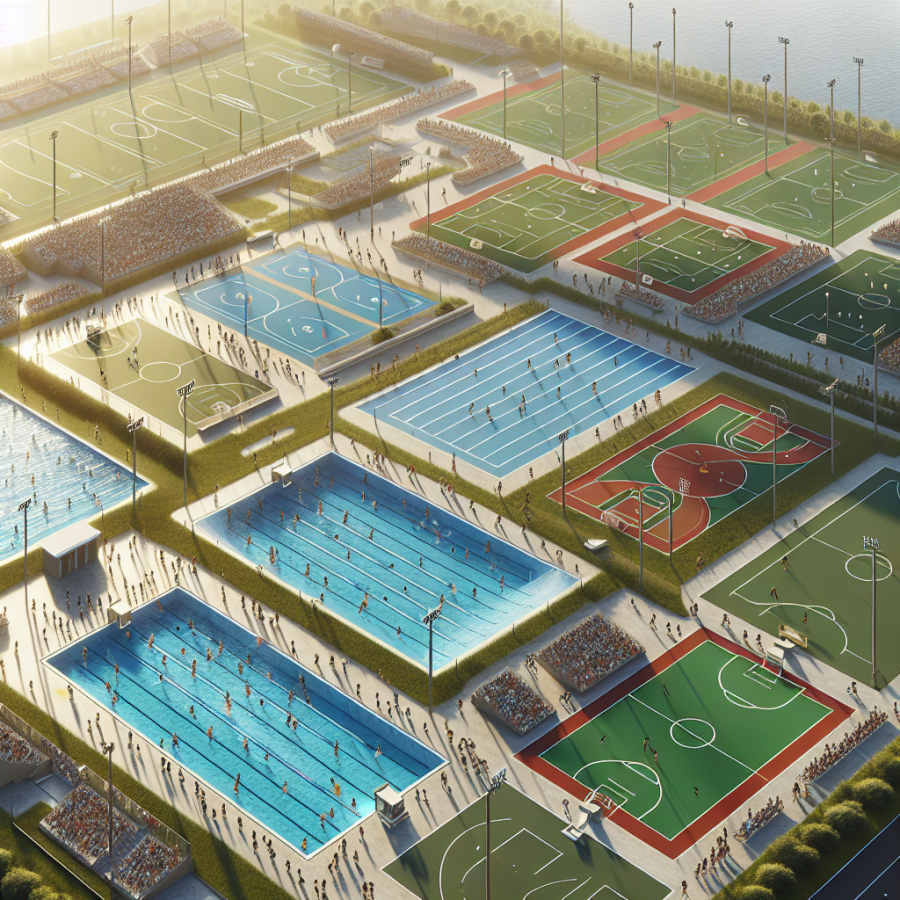Enhancing Community Fitness Through High-Quality Sports Facilities
High-quality sports facilities play a vital role in enhancing community fitness. They offer a platform for people to engage in a wide range of physical activities that are beneficial to their health. Moreover, they encourage social interaction, enhancing mental health, well-being, and overall community development.
An essential aspect of high-quality sports facilities is the variety of options they present. These can range from basketball and tennis courts to football fields, gymnasiums, and swimming pools. Offering a choice means catering to the diverse interests of community members, thus enhancing participation rates. When people have access to activities they genuinely enjoy, they are more likely to engage regularly, making the fitness journey enjoyable and sustainable.
Accessibility is another critical aspect of high-quality sports facilities in a community setting. Facilities should be located in places that are easily reachable to the majority of the community. Lower travel times incentivize participation, making it convenient for people to include physical activities in their daily routines. In addition, facilities should be designed to cater to all age groups and different abilities, including children, the elderly, and people with disabilities.
Moreover, high-quality sports facilities are characterized by their safe and well-maintained environment. An environment where individuals feel safe plays a significant role in encouraging participation. It ranges from having well-lit areas that allow for evening activities to maintaining equipment in a good state. Besides, having trained personnel on site to handle emergencies and offer first aid initiates a secure, inviting environment.
Apart from physical infrastructure, these high-quality facilities offer programs and activities designed by professionals in the field. These structured activities can help community members to engage in appropriate exercises safely and correctly, significantly reducing the risk of injuries. Furthermore, guided programs can provide motivation and set clear, achievable fitness goals, boosting participation and commitment.
Finally, high-quality sports facilities can also serve to foster social cohesion in the community. On one hand, they offer a space where community members can interact, engage in team activities, and build relationships, thus enhancing the social aspect of health. On the other hand, they can be used to host events like tournaments, where the community can come together, promoting unity and a sense of belonging.
In conclusion, high-quality sports facilities are crucial in promoting physical activity in the community. They offer a range of options and cater to the demographic variety of community members. Their accessibility, safety features, professional guidance, and role in fostering social cohesion make them an invaluable asset in enhancing community fitness.
The Correlation Between Sports Facilities’ Quality and Community Health Progression
Access to high-quality sports facilities has a direct and significant impact on the level of fitness not only for the individuals who make use of them but also, in turn, the community as a whole. The built environment, including sports facilities, plays a vital role in promoting or deterring physical activity among the population and thereby influencing community health progression.
Sports facilities that come with high standards such as clean environments, maintained equipment, and plenty of physical space for different types of activities can make these places an attractive option for individuals to engage in physical activity. Safe, clean, and inviting environments are critical factors that can help to encourage people to take up exercise, particularly for those who are not ordinarily physically active.
The provision of a variety of quality equipment and facilities also gives users a range of exercise options. Different individuals have different exercise preferences and providing a variety of options can cater to these varying preferences. This in turn can attract a larger number of people towards physical activity, subsequently leading to improved community health.
One might presume that high-quality sports facilities would only benefit those who we might categorize as 'sports enthusiasts'. However, the presence of well-built and maintained facilities, especially when these are open to the public, can encourage even those who might not ordinarily participate in sports. From this perspective, access to quality sports facilities becomes an essential factor in introducing more of the public to physical activity, thereby improving overall standards of health within the community.
Furthermore, high-quality sports facilities can serve as a community hub where people can interact, build relationships, and develop a sense of belonging. This sense of community involvement can motivate individuals to be more physically active, enhancing both their individual health and the community health.
Aside from the psychological and sociological impacts, there is also significant evidence to suggest that high-quality sports facilities can enhance physical health by providing an opportunity for individuals to engage in varying levels of intensity exercises. This can range from light, moderate to high-intensity exercises that cater to different fitness levels. These well-equipped facilities can facilitate exercise regimes that aim at cardiovascular health, muscular strength, flexibility and balance, all of which are vital components of physical health.
High-quality sports facilities not only promote physical activity, but they also provide the platform to host health and fitness programs and workshops. These workshops can educate community members on the importance of regular exercise, teach them various workouts and provide guidance on maintaining a healthy lifestyle.




